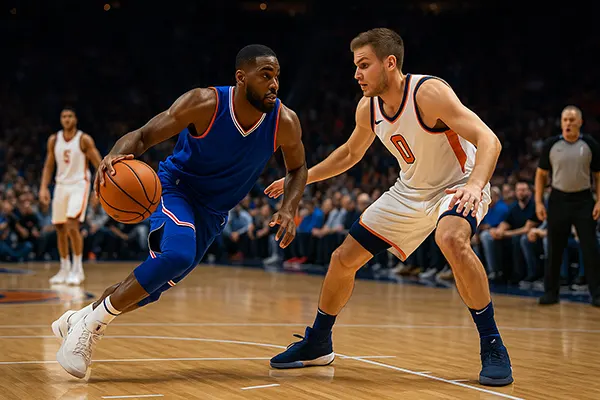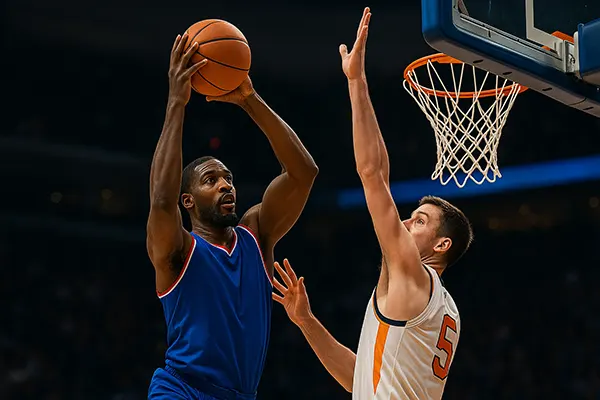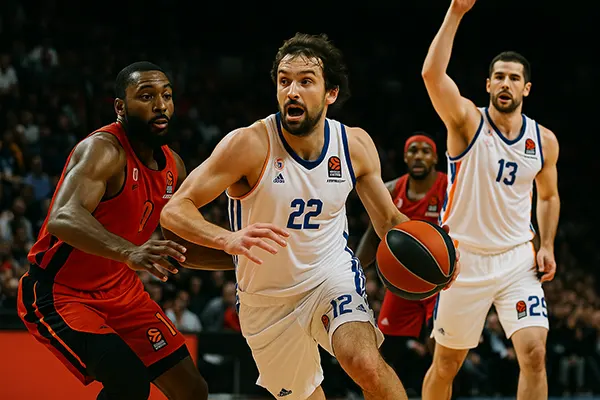NBA Transformation in the 2025/26 Season: Format Changes and Their Impact on Betting

The NBA has never stood still, and the 2025/26 season is poised to be one of the most transformative in the league’s modern history. With a revised structure for regular-season scheduling, redefined play-in mechanics, and regulatory innovations, this overhaul promises to redefine the strategic landscape not only for teams and players but also for sports bettors worldwide. This article examines the fundamental changes, their rationale, and how they affect betting behaviours and odds modelling.
New NBA Season Structure: The Mechanics of Change
The 2025/26 NBA season brings a completely redesigned calendar format, increasing the emphasis on competitive balance and international engagement. The regular season will now feature 78 guaranteed games per team, with additional “floating fixtures” allocated based on early-season performance. These fixtures aim to foster late-season competitiveness and maintain playoff tension across conferences.
A notable inclusion is the integration of an international series – an expansion of the league’s global outreach efforts. Selected teams will travel to host official games in Europe, Asia, and South America. The timing and selection criteria for these games are based on market growth metrics and player nationalities, aiming to deepen regional fan bases and increase international betting interest.
In addition, back-to-back games have been further reduced to accommodate player wellness concerns and improve on-court performance consistency, a factor long considered in betting metrics related to rest disadvantage.
Impact on Team Preparation and Seasonal Predictability
The new schedule format introduces dynamic uncertainty, as late-season matchups will be determined by earlier win-loss records. Teams must now adopt flexible training strategies, with heightened focus on the first half of the season. This approach affects how bettors assess consistency and endurance throughout the campaign.
Furthermore, coaches may strategically rotate line-ups to maximise health across the year, reducing predictability in star player availability. This will likely result in more variable betting lines, requiring deeper analysis and faster odds adjustment by bookmakers and punters alike.
While the league’s aim is increased fairness and competitiveness, the result for betting markets is a shift towards volatility. Predictive models based on historical parallels may lose accuracy due to the adaptable nature of the new system.
Revamped Play-In Tournament and Playoff Implications
One of the most discussed changes is the expansion and reseeding of the Play-In Tournament. Starting in 2025/26, seeds 7 through 10 in each conference will be joined by a conditional wildcard team—determined by win-loss improvement rates during the final 20 games of the season. This adjustment rewards late-season momentum, not just overall record.
The tournament will now include a best-of-three series, rather than the previous single-game eliminations. The move is intended to reduce randomness and increase the sample size for determining playoff-worthy teams. This shift has implications for betting volatility, as outcomes are now less likely to be swayed by singular hot or cold performances.
Additionally, the winners of the Play-In will no longer automatically slot into the 7th and 8th seeds. Instead, a reseeding process based on adjusted net rating will dictate playoff matchups. Bettors must now track more granular statistical metrics to forecast playoff progression.
Shifting Betting Strategies for Play-In Rounds
With longer series replacing single-elimination games, betting patterns for Play-In rounds will resemble traditional playoff betting rather than regular season games. Bettors will need to consider mid-series coaching adjustments, travel schedules, and player fatigue over multiple matchups.
The wildcard element introduces further complexity. Bookmakers may struggle to price odds effectively due to the unpredictability of final wildcard selections and the compressed schedule leading into the Play-In round. This provides potential arbitrage opportunities for sharp bettors who closely monitor late-season performance trends.
Because reseeding is determined by analytical metrics rather than final standings alone, bettors should factor in net rating, pace differential, and injury-adjusted line-up efficiency rather than relying on simple win totals.

Betting Market Reactions and Analytical Adjustments
The 2025/26 format changes have already triggered recalibrations across major sportsbooks and betting platforms. Bookmakers are incorporating machine learning models that factor in adaptive scheduling and late-stage performance momentum. This has led to tighter spreads and less favourable margins for public bettors.
Live betting has gained increased importance due to structural unpredictability. Real-time player availability updates, momentum swings, and match context are now pivotal in determining betting value. Odds compilers are investing heavily in AI-driven contextual algorithms to respond quickly to game shifts.
Moreover, futures markets have become riskier for casual punters. With more variables in play—floating games, wildcard scenarios, reseeding rules—long-term projections are harder to model. This reality shifts strategic advantage to data-driven analysts and professional syndicates.
Responsible Betting in a Dynamic Environment
As NBA betting becomes more complex, maintaining a responsible approach is essential. The increased number of variables may lead to cognitive overload, prompting impulsive decisions. Bettors are encouraged to set strict budgets, use data conservatively, and prioritise entertainment value over monetary gain.
Sportsbooks now offer more tools for responsible gambling, such as reality checks, self-exclusion options, and personalised risk alerts. With the new format’s volatility, these tools are particularly relevant for helping individuals avoid chasing losses in unpredictable conditions.
Education also plays a role. Bettors should invest time in understanding the rules, evaluating team context beyond superficial stats, and focusing on long-term discipline rather than short-term profit spikes. Awareness and moderation remain key pillars of sustainable engagement.






